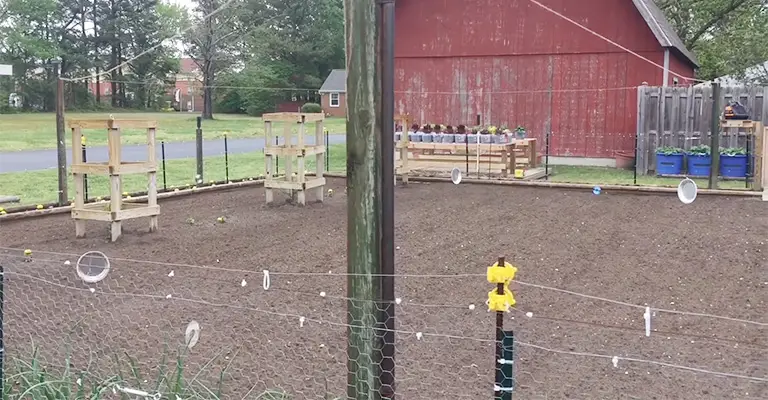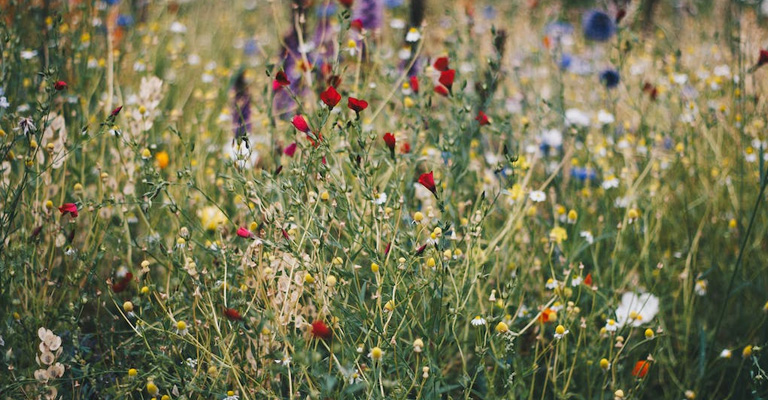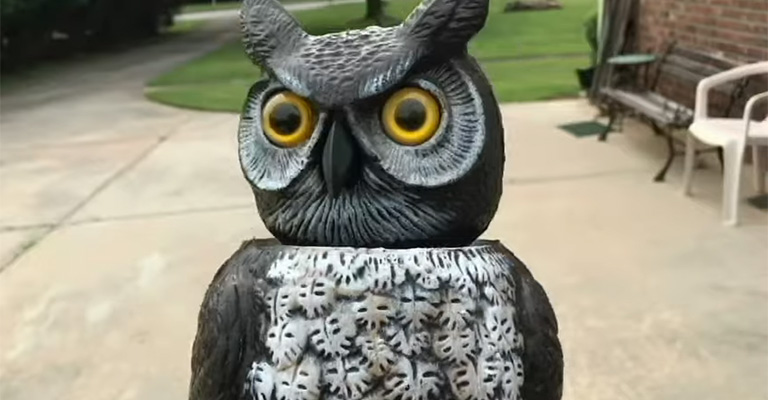Keeping birds out of your garden can be a challenging task, especially when their presence poses a threat to your hard-earned crops. Birds are known to cause damage by feasting on fruits, vegetables, and even seeds.
Fortunately, there are several effective strategies to safeguard your garden and discourage these feathered visitors.
From physical barriers to sensory deterrents, a combination of methods tailored to your specific needs can create an environment that birds find less inviting.
By employing these tactics, you can strike a balance between maintaining a thriving garden and respecting the natural world around you.
In this article, we will delve into how to keep birds out of the garden that can help you protect your garden from avian intruders while preserving the beauty and productivity of your cherished outdoor space.

How To Keep Birds Out Of The Garden? [11 Effective Ways]
Birds can be a nuisance for gardeners, as they can damage or eat your plants, fruits, and vegetables.
Here are 11 effective ways to keep birds out of your garden, with a paragraph description for each point:
Use Netting
Netting is a physical barrier that prevents birds from accessing your plants. You can buy netting from garden centers or online and cover your plants with it.
Make sure to elevate the netting, rather than laying it directly on the plants, to prevent the birds from pecking through it.
Build A Scarecrow
A scarecrow is a human-like figure that scares away birds. You can make your own scarecrow with old clothes, straw, and sticks and place it in your garden.
You should move your scarecrow around every week so that the birds don’t get used to it.
Use Reflective Objects
Reflective objects, such as aluminum pie plates, metal utensils, CDs, or mirrors, can deter birds by reflecting sunlight and making noise.
You can hang these objects from fence posts, tree branches, or stakes around your garden.
Install Bird Spikes
Bird spikes are metal or plastic spikes that prevent birds from landing or nesting on certain surfaces. You can install bird spikes on your fence, roof, or window sills to keep birds away from your garden.
Spray Repellents
Repellents are substances that make your plants unappealing to birds. You can spray repellents on your plants or around your garden to discourage birds from visiting.
Some common repellents are hot pepper sauce, garlic, vinegar, or soap.
Plant deterrents

Some plants can repel birds by their smell, taste, or appearance. You can plant these plants in your garden or in pots around your plants to protect them from birds.
Some examples of deterrent plants are lavender, marigold, mint, basil, or thorny roses.
Use Decoys
Decoys are fake animals that scare away birds by mimicking their natural predators. You can buy decoys of owls, hawks, snakes, or cats from garden stores or online and place them in your garden.
You should move your decoys around every few days and make sure they look realistic and lifelike.
Play Sounds
Sounds can frighten birds and make them avoid your garden. You can play the sounds of bird distress calls, predator calls, or loud noises from a speaker or a radio in your garden.
You should change the sounds frequently and play them at different times of the day.
Provide Alternative Food Sources
Birds may visit your garden because they are hungry and looking for food. You can provide alternative food sources for them away from your garden, such as bird feeders, bird baths, or birdhouses.
This way, you can attract the birds to another area and keep them satisfied.
Trim Trees And Shrubs
Trees and shrubs can provide shelter and nesting sites for birds in your garden. You can trim them regularly to reduce their attractiveness and accessibility for birds.
You should also remove any dead branches or leaves that may attract insects that birds feed on.
Use Balloons
Balloons are colorful and moving objects that can scare away birds. You can inflate some balloons and tie them to stakes or strings around your garden.
You can also draw eyes or faces on the balloons to make them more intimidating for birds.
Remember that combining multiple methods might yield better results. Birds can adapt to single deterrents over time, so periodically changing your approach can help maintain their effectiveness.
Do These Methods Work For All Types Of Birds?

No, these methods do not work for all types of birds. Different birds have different behaviors, preferences, and adaptations that may affect how they respond to various deterrents.
For example, some birds may be more sensitive to sounds, while others may be more attracted to shiny objects. Some birds may learn to ignore or overcome the deterrents over time, while others may avoid them permanently.
Therefore, it is important to choose the appropriate deterrent for the specific bird problem you have and to monitor its effectiveness regularly. You may also need to combine different methods or switch them periodically to achieve the best results.
Some factors that may influence the effectiveness of bird deterrents are:
Type And Size Of The Bird
Larger birds may be more difficult to scare or exclude than smaller ones. Some bird species may be more aggressive, intelligent, or adaptable than others.
Number And Frequency Of The Birds
A large flock of birds may be more persistent and harder to deter than a few individuals. Birds that visit your garden regularly may become habituated to the deterrents and learn to ignore them.
Season And Weather
Some birds may migrate or change their feeding habits depending on the season. Weather conditions such as wind, rain, or fog may affect the visibility or audibility of the deterrents.
Availability And Attractiveness Of The Food Source
Birds may be more motivated to access your garden if there is a plentiful and desirable food source available. You may need to remove or cover any potential food sources, such as fruits, vegetables, seeds, or compost.
location and layout of your garden
Some deterrents may work better in certain areas or situations than others. For example, netting may be more effective for covering a small patch of plants than a large area.
Balloons may be more visible in an open space than in a shaded or cluttered one.
Do These Methods Harm The Birds?
According to the web search results, most bird deterrents are designed to repel birds, not harm them. Most bird deterrents work by creating an unpleasant environment for birds, making them avoid the area.
However, it is essential to choose bird deterrents that are humane and safe for birds. Some bird deterrents, such as sharp spikes, chemical repellents, or avicides, may injure or kill birds, which is not only cruel but also illegal in many cases.
Therefore, you should always check the legality and safety of any bird deterrent before using it in your garden.
FAQs
Bird netting is a highly effective barrier. It’s lightweight, allowing sunlight and rain to reach plants while preventing birds from accessing them.
Sonic repellents emit distress calls, or predator sounds intermittently, creating an environment of danger that discourages birds from approaching your garden.
Yes, scarecrows remain effective. Realistic scarecrows that move with the wind can trick birds into thinking predators are nearby.
Spices like garlic and chili peppers, when sprinkled around your garden, can deter birds due to their strong scent and taste.
Hanging objects like old CDs or aluminum foil in your garden creates flashes of light that startle birds. This movement and shine discourage them from settling down and feeding.
Conclusion
In the harmonious realm of gardening, coexisting with nature’s creatures requires creativity and adaptability. The methods discussed offer a range of solutions to address the challenge of keeping birds out of your garden.
Remember, it’s not just about warding off these creatures but also about fostering a sustainable environment where both flora and fauna can flourish.
By embracing a combination of physical barriers, scare tactics, and natural aversion techniques, you can enjoy the fruits of your labor while contributing to the balance of your ecosystem.
As you tailor these strategies to your unique garden setting, you’re not just deterring birds – you’re cultivating a sanctuary where your plants can thrive and where the beauty of nature can be celebrated without compromising your yields.